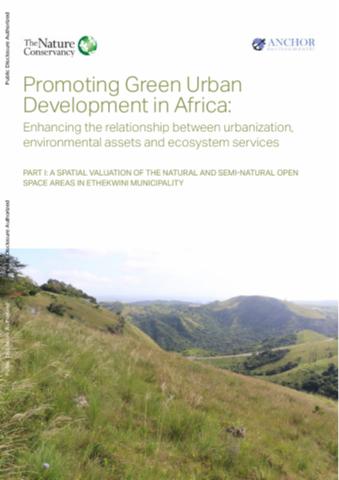The World Bank is a vital source of financial and technical assistance to developing countries around the world. We are not a bank in the ordinary sense but a unique partnership to reduce poverty and support development. The World Bank Group has two ambitious goals: End extreme poverty within a generation and boost shared prosperity.
- To end extreme poverty, the Bank's goal is to decrease the percentage of people living on less than $1.25 a day to no more than 3% by 2030.
- To promote shared prosperity, the goal is to promote income growth of the bottom 40% of the population in each country.
The World Bank Group comprises five institutions managed by their member countries.
The World Bank Group and Land: Working to protect the rights of existing land users and to help secure benefits for smallholder farmers
The World Bank (IBRD and IDA) interacts primarily with governments to increase agricultural productivity, strengthen land tenure policies and improve land governance. More than 90% of the World Bank’s agriculture portfolio focuses on the productivity and access to markets by small holder farmers. Ten percent of our projects focus on the governance of land tenure.
Similarly, investments by the International Finance Corporation (IFC), the World Bank Group’s private sector arm, including those in larger scale enterprises, overwhelmingly support smallholder farmers through improved access to finance, inputs and markets, and as direct suppliers. IFC invests in environmentally and socially sustainable private enterprises in all parts of the value chain (inputs such as irrigation and fertilizers, primary production, processing, transport and storage, traders, and risk management facilities including weather/crop insurance, warehouse financing, etc
For more information, visit the World Bank Group and land and food security (https://www.worldbank.org/en/topic/agriculture/brief/land-and-food-security1
Resources
Displaying 66 - 70 of 4907Beyond “More Crop per Drop”: evolving thinking on agricultural water productivity
This Research Report chronicles the evolution of thinking on water productivity in the research agenda of IWMI and in the broader irrigation literature over the past 20 years. It describes the origins of the concept and the methodological developments, its operationalization through applied research, and some lessons learned over the two decades of research.
Beyond “More Crop per Drop”: evolving thinking on agricultural water productivity
This Research Report chronicles the evolution of thinking on water productivity in the research agenda of IWMI and in the broader irrigation literature over the past 20 years. It describes the origins of the concept and the methodological developments, its operationalization through applied research, and some lessons learned over the two decades of research.
Developing a Sustainable Plantation Wood Supply through Successful Community-Company Partnerships in Indonesia
Since the early 1990s, the industrial timber plantation (Hutan Tanaman Industri - HTI) scheme has been intended to serve as a major source of timber to meet domestic and export demand. The need to meet a large gap between legal wood supply and demand for forests products has been the recent years as high as 50 million
A Spatial Valuation of the Natural and Semi-Natural Open Space Areas in eThekwini Municipality
Durban is located within a global biodiversity hotspot, and still contains a wealth of biodiversity. Some of this is protected in nature reserves, but much of it is in private hands or in communal lands on the city’s periphery. City managers are divided over the level of attention that should be given to preserving these remaining natural areas.
Land Change Dynamics
Land change in Kigali, Rwanda, is examined using Intensity Analysis, which measures the temporal stationarity of changes among categories. Maps for 1981, 2002 and 2014 were produced that show the land categories Built, Vegetated and Other, which is composed mainly of croplands and bare surfaces. Land change accelerated from the first time interval (1981–2002) to the second time interval (2002–2014), as increased human and economic activities drove land transformation.









